The Ceasefire Between Israel and Hezbollah - A Good Thing or Not?
December 1 , 2024 - Issue #65
Thank you to all my subscribers and followers. You honor me with your presence. If you think this article of value, please share it with others. Please also consider indicating if you see value in the article by “liking” it or adding a comment.
On Wednesday, November 27, 2024, at 4:00 AM, the guns fell rather silent in Lebanon and northern Israel. But the Third Lebanon War did not end. Hezbollah’s desire to destroy Israel did not end. And Iran’s “Axis of Resistance” proxy strategy did not end, it just lost a battle. For what we now have is a ceasefire not a permanent end to fighting. It is only a respite. Hezbollah has no desire to negotiate a permanent accommodation that recognizes Israel’s sovereignty. Nor does Iran. Hezbollah still is a major player in Lebanon’s government and Iran now likely controls Hezbollah more than ever. Also important to note, the ceasefire deal, although approved by Hezbollah, was not formally accepted by Hezbollah. Instead, a weak Lebanese government unable to act without Hezbollah’s approval accepted the deal. In essence, this is a geopolitical version of the wolf guarding the henhouse.
The purpose of this essay is to delve deeply into whether the ceasefire now in place is a benefit to Israel or a detriment? To do so, I will:
Summarize events leading up to the ceasefire being finalized.
Discuss known terms of the ceasefire.
Provide brief insight into what Israelis in the north think about it.
Raise some of the pitfalls of the deal.
Offer my thoughts regarding whether the ceasefire should be considered an Israeli victory and the road ahead.
The Days Leading Up to the Ceasefire
I do not intend to go into a detailed history of events since October 7, 2023, other than to note:
The day after Hamas attacked Israel, so did Hezbollah on October 8.
Since then, Israel and Hezbollah have been embroiled in open warfare—on Hezbollah’s part with the intent to disrupt Israel’s defensive actions against Hamas, cause northern Israeli civilians to leave their homes, inflict enormous economic damage on the state of Israel, and overall, in conjunction with other Iranian proxies and direct Iranian attacks, set the stage for Israel’s implosion and destruction.
In response, Israel for the most part has engaged in a defensive attrition campaign that shaved off some of Hezbollah’s military assets. However, on September 16, Israel’s cabinet changed its gameplan when it announced that Israel had now added as a war goal, “returning the residents of the north securely to their homes.” After that, the IDF launched a hugely successful whirlwind of attacks (pager bombs, aerial assault, assassinations, etc.) that included a ground incursion into southern Lebanon beginning on October 1. The ground campaign, which focused on areas in Lebanon close to Israel’s border, during which the IDF confiscated massive amounts of personnel munitions, identified and destroyed numerous tunnels and military installations, and located and destroyed huge quantities of missiles of various types—much of which was stored in, under, or in close proximity to residential homes, mosques and other civilian facilities.
In total, the IDF has destroyed up to 80% of Hezbollah’s missile armaments, killed thousands of its rank and file and 174 of its leaders, demolished much major and minor infrastructure designed to further Hezbollah’s goals destroyed, and confiscated huge quantities of weaponry.
Then came Thursday, November 21. Two days before, Amos Hochstein (an American assigned mediator that has been involved in the region for some time) had come to Lebanon in hopes of wrapping up a ceasefire agreement between Hezbollah and Israel. There, he met with Hezbollah’s approved interlocutor, Lebanese government’s Speaker of the Parliament Nabih Berri. Berri is the Shiite leader of Amal, once a rival Shiite movement to Hezbollah that now operates in relative lockstep with it. As such, even though Berri is a member of Lebanon’s government it is fair to think of him as one of many Hezbollah wolves in the henhouse. Hochstein, feeling he was close to achieving his goal, then travelled to Israel to meet with Israeli Prime Minister Netanyahu.
During Hochstein’s meeting with Netanyahu, news broke that the French Foreign Ministry had issued a statement suggesting that France would honor the recently issued International Criminal Court (ICC) arrest warrant for Netanyahu and former Defense Minister Gallant, and therefore would detain them should either of them ever be on French soil (I will deal with the ICC’s spurious and outrageous action in a future newsletter). Since Hochstein’s ceasefire proposal called for a significant future French role in monitoring compliance with the agreement, this caused quite a hiccup. Furious, Netanyahu demanded that a now decidedly unfriendly France (there have been other recent acts that amply demonstrate its growing anti-Israel slant) must be excised from playing an ongoing role in the ceasefire process. Believing that insisting on France’s exclusion would unravel the deal, Hochstein notified his bosses of the impasse.
President Biden then called Frances’ President Macron, and reportedly told Macron that Netanyahu had a right to be angry. Macron did not back down during the conversation, but the next day France slightly watered down the Foreign Ministry’s statement of the day before. Then, hours after the ceasefire took effect, France announced that it could not be expected to act in a manner incompatible “with respect to the immunities of States not party to the ICC.” Meaning, without specifically saying it, that Netanyahu and Gallant would be afforded immunity and therefore would be safe from arrest should they be on French soil. Thus, it appears that a face-saving deal was worked out that both Netanyahu and France could accept.
Now on board with the proposed deal, on Tuesday, November 25, Netanyahu spoke to the Israeli people in a televised address. Of the ceasefire proposal, he said, “Only three months ago, this all would have sounded like science fiction,” and that during the ceasefire “if Hezbollah launches a rocket, if it digs a tunnel, it if brings a truck carrying rockets, we will attack.” That same day Israel and Hezbollah got in last shots. Hezbollah fired a massive barrage of rockets at locations as far south as Haifa. Meanwhile, IDF airstrikes hit about 300 Hezbollah targets in Beirut and elsewhere that included Hezbollah’s financial centers, military targets, and a massive, almost mile-long underground precision guided missile factory in the Bekaa Valley. That night, Israel’s Cabinet voted 10-1 to approve the ceasefire. Iran’s Ayatollah Khamenei also approved the deal as did the incoming Trump national security team.
At 4:00 AM on November 27, the ceasefire went into effect.
What’s in the Ceasefire Deal?
The deal has two components composed of the agreed upon ceasefire text and, based on what has so far been made public, a side letter given to Israel by the United States which contained additional understandings. Below is a summary of both documents.
The Ceasefire text has 13 provisions that I have boiled down into the following summary and commentary:
From November 27, 2024, at 4:00 AM and forward, Lebanon’s government will prevent Hezbollah and any other armed groups from carrying out any military operations against Israel. In return, Israel will refrain from undertaking any offensive military operations against targets in Lebanon. However, this commitment does not bar Lebanon or Israel from “exercising their inherent rights of self-defense, consistent with international law.”
Commentary – Already, forty-five percent of the Lebanese Armed Forces (LAF) are Shiites and the LAF has historically proved ineffectual and/or uninterested in reining in Hezbollah. And, there is no doubt that today the LAF is riddled with Hezbollah’s supporters and agents.Israel and Lebanon recognize the “importance of UNSCR 1701 … and commit to taking steps towards its full implementation, without violation.” And further, that per UNSCR 1701 and its incorporated predecessor resolutions that UNSCR 1701 orders “disarmament of all armed groups in Lebanon” leaving only the LAF, UNIFIL (the United Nations created force that has ineffectually operated in southern Lebanon for decades), and other Lebanese security entities with the right to bear arms in Lebanon.
The agreement states specifically that the LAF and UNIFIL will be the only entities permitted to maintain weapons or military infrastructure in southern Lebanon as delineated in an attached map.
Commentary – This provision requires the LAF, starting in the area south of the Litani River—to dismantle any remaining Hezbollah military infrastructure and weapon production facilities, and confiscate all unauthorized armaments and prevent their reintroduction in the future. Southern Lebanon for the purposes of this agreement is an area south of the Litani River (for the most part this region stretches 18 miles from the Litani river to Israel’s border but in certain areas the designated area extends north of the river where it comes much closer to Israel and in other areas several miles from the border where the Litani River does not flow).Lebanon will have ongoing responsibility to prevent any sale or supply of arms to non-state groups in Lebanon.
Commentary - This, makes Lebanon responsible for blocking Iranian armaments from entering the country and coming into Hezbollah’s possession. Also, Lebanon is charged with regulating and controlling any attempts to produce armaments or “related material” inside Lebanon.To accomplish its responsibilities, Lebanon’s forces will have the right to go anywhere in Lebanon.
Commentary – Previously, Hezbollah blocked LAF and UNIFIL movement into what it claimed were privately owned areas.The U.S. and France, along with unspecified other members of the international community, will provide resources and expertise required by the LAF to base 10,000 of its soldiers in southern Lebanon.
A tripartite “Mechanism” will spring into existence, chaired by the United States (likely a military officer from CENTCOM) that will also be composed of representatives from France and England. This mechanism will be hosted by UNIFIL and is charged with the responsibility to “monitor, verify, and assist in ensuring enforcement” of Lebanon’s and Israel’s ceasefire commitments. To accomplish that, the Mechanism will strengthen and train the LAF. UNIFIL will act in a manner to enhance the effectiveness of the Mechanism.
Should Israel or Lebanon learn of any ceasefire violations, they are to report those violations to the Mechanism which will then investigate the charges.
Commentary – After investigating, the Mechanism will tell the relevant party to rectify the violations and when necessary, how.After the ceasefire goes into effect, the LAF is required to deploy its forces to all borders and specifically to all border crossings. In addition, the LAF is to set roadblocks, checkpoints, etc. south of the Litani River.
After the ceasefire goes into effect, the IDF will withdraw its forces, in a phased manner over sixty days, from where it is now deployed south of the Litani River. The LAF’s deployment will replace IDF forces as they move back to Israel. Once in place, the LAF is required to immediately commence dismantling Hezbollah and other non-state actor military sites and infrastructure and confiscate remaining unauthorized arms. The Mechanism will coordinate this process.
The U.S., in partnership with the U.N. will facilitate indirect negotiations regarding any disputed border issues consistent with UNSCR 1701.
Commentary – There are thirteen disputed areas—some only involving a few yards of territory— that have been indirectly discussed by the parties without resolution for decades. In 2000, the U.N. signed off on Israel’s withdrawal from south Lebanon to what came to be known as the Blue Line, leaving certain remaining land issues to be resolved by future negotiations. Hezbollah used this to justify maintaining its armed presence in southern Lebanon in supposed defense of Lebanon and to take by force that which is in dispute. Thus, the ceasefire agreement seeks to defang one of Hezbollah’s arguments for its armed existence.A goal of the agreement is “to enable civilians on both sides of the Blue Line to return safely to their homes.”
Of note, there is no provision requiring Israel to free Hezbollah prisoners taken during the fighting. Fortunately, Hezbollah did not capture any Israelis since the fighting started on October 8, 2023.
Realizing that the ceasefire agreement is composed of high-minded words that will not adequately deal with Hezbollah’s perfidy and the LAF’s ineffectiveness, Israel insisted on obtaining a side letter from the United States that further spells out Israel’s right to defend itself should Hezbollah or others violate the agreement.
Reported details of the side agreement boil down to the following that also includes my commentary:
The U.S. will provide Israel with intelligence information regarding violations of the ceasefire deal that will include any Hezbollah’s attempts to infiltrate the LAF.
Israel retains the right to conduct reconnaissance flights over Lebanon.
Commentary—This is a crucial detail since reconnaissance is vital for keeping track of Hezbollah’s activities and had previously been used by Hezbollah to argue that Israeli overflights of Lebanon violated UNSCR 1701.The U.S. will work with Israel to prevent Iran from smuggling weapons into Lebanon and destabilizing its government.
The U.S. confirmed that Israel can respond to threats inside Lebanon “in accordance with international law,” and that should the terms of the ceasefire deal be broken in southern Lebanon that Israel reserves the right to act at any time. However, outside southern Lebanon, Israel is constrained from responding to Hezbollah ceasefire obligations unless the LAF is unable or unwilling to deal with the violations.
Commentary – This provision means that Israel can fire at threats. But it also introduces a cumbersome process should Hezbollah place missiles or drones north of the Litani River that can easily reach targets in Israel. Similarly, it constrains Israel’s ability to destroy arms shipments that arrive in-country or the creation of weapon factories north of the Litani River. Nor does it place any limitation on how long the LAF has to act against the violation.“Wherever possible” should Israel respond to threats anywhere in Lebanon it must notify the U.S.
Commentary – Since there is no clear definition of “responding to threats”, this notice requirement might include intelligence operations, espionage, etc. This constraint is highly problematic since it introduces delay and the potential for leakage of intended actions as well as intelligence sources and methods, especially concerning where time is of the essence and/or the operation is particularly sensitive.
President Biden, in a public address hours after the ceasefire agreement came into force, said the deal is “designed to be a permanent cessation of hostilities,” and that it would permit the LAF to “deploy and take control over their territory.” And, putting his interpretation of the deal in the public eye, he said, “What is left of Hezbollah and other terrorist organizations will not be allowed, I emphasize, will not be allowed, to threaten the security of Israel ever again,"
What Do Israelis Think of the Agreement?
Suffice it to say, many Israelis living in the north that have suffered under bombardment for months, are unhappy with the deal. Even more so, that is the case for many of the 60,000 who lived in the region near the border and that were evacuated and have since been living in hotels and alternate housing for more than a year. Their unhappiness stems from their valid concern that the deal will not allow them to safely return to their former homes and lives. Below are quotes from some of them:
The head of the Mateh Asher Regional Council who is also Chairman of the Conflict Zone Forum, said if an agreement between Lebanon and Israel doesn’t include a buffer zone north of Israel’s border with a “strong international force and the removal of Hezbollah beyond the Litani River,” that Israel will be making a “historic mistake” that “will repeat history,” evidenced by the “broken promises and ineffective agreements [Israel entered into] after the First Lebanon War and the Second Lebanon War.”
The head of the Merom Galil Regional Council stated that the ceasefire won’t remove Hezbollah’s threat and that “unfortunately, there is a difference between quiet and security. One wants to live in a place where there is no need for security, which is the basis and foundation of human needs.” Therefore, he has not yet told his constituents to come back nor has the government issued guidelines for their return. He also indicated his displeasure with the agreement equating the need for both Lebanese and Israeli citizens to be able to return to their homes, arguing that Israelis living on the border have no equivalence with the many Lebanese that harbored Hezbollah in their homes. “These aren’t villages [in southern Lebanon]” he said. “These are terror outposts. They have no choice but to cooperate with terror organizations in Lebanon.” Therefore, he says a buffer zone in Lebanon is needed to keep Israelis safe.
“I think it is still not safe to return to our homes because Hezbollah is still close to us,” said an evacuated resident of Kiryat Shmona.
A resident of a border kibbutz said, “I want to be sure that if we do move back, I’ll be able to walk around outside and feel safe.”
Another border kibbutz resident said, “After October 7, our trust in the army and the government was broken … It will be very hard to restore our trust.”
And two friends of mine expressed thoughts that amount to the same thing—although they revel in the quiet, they still fear what might come at them at any moment—either from Hezbollah or one of the other Iranian proxies.
Many other Israelis in official positions have expressed alarm too. One is Avigdor Liberman, now leader of an Israeli political party, who predicted October 7 in an eleven-page paper he issued in 2016 while serving as Israel’s Defense Minister. In it, he wrote, “Hamas intends to take the conflict into Israeli territory by sending a significant number of well-trained forces (like the Nukhba [commandos] for example) into Israel to try and capture an Israeli community (or maybe even several communities) on the Gaza border and take hostages.” Liberman, subsequently resigned in 2018 after Israel then entered into a ceasefire agreement with Hamas and other armed groups in Gaza after a round of fighting. As such, his warning regarding the ceasefire deal with Hezbollah is especially significant. “Netanyahu,” Liberman now says, “bought himself short-term quiet, at the price of national security in the long run. This deal only serves to limit us and, by contrast, does not limit the other side at all. It would have been better to withdraw from Lebanon with no deal at all.”
Nevertheless, I sense there is some hope in the air. On Saturday, November 30, Shabbat in the north was peaceful. Yet, nobody knows what the future will bring. This is not a trust but verify situation—rather, it’s a don’t trust and actively enforce environment.
Why Enter Into a Ceasefire Now?
With Hezbollah still firing 150-250 rockets and drones into Israel per day (much less than its projected prewar capability of several thousand a day), Israel had to address the issue because Hezbollah probably could have continued that rate of fire for many months. Therefore, if not a ceasefire now, Israel had only two other options:
A full-scale attack deep into Lebanon that would leave the IDF occupying large swathes of the country for a long period of time. While this is likely within the IDF’s capability, it would severely strain Israel’s resources, and limit the IDF’s ability to:
a. finish off Hamas,
b. deal with Iran’s other proxies, and
c. inflict a significant blow on Iran’s nuclear program should Israel’s leadership decide that to be necessary.
Decide to continue as is. However, doing that has diminishing returns because the IDF has killed or destroyed much, if not all, of Hezbollah’s easier to reach military infrastructure and weaponry along with much of its leadership. What remains is harder to get at, better educated as to the IDF’s tactics, and likely requires risking more Lebanese civilian casualties and the lives of more IDF soldiers for less return. Meanwhile, life in northern Israel would remain at a standstill.
In addition to the alternatives listed above, eight other factors probably played a role in Israel’s decision to agree to a ceasefire now:
Israeli reservist exhaustion, of whom many have served for 200 days (some up to 400 days). If the ceasefire holds, reservists will be able go home to their families, businesses, and jobs while the regular army finishes Hamas.
Israel’s desire to fight as much as possible on one front at a time.
Because Iran is moving forward with its nuclear program, Israel may soon find it necessary to attack Iran’s nuclear sites (especially if the Trump administration approves). It will be much easier to do so if the air force is not heavily engaged in Lebanon (although if Hezbollah violates the ceasefire after an Israeli attack on Iran, Israel’s air force will need to respond thus reducing its ability to engage in a comprehensive, multi-day strike on Iran).
Getting Hezbollah out of the war increases the pressure on Hamas to agree to a deal that Israel can accept that would return the hostages.
American pressure that probably included some form of explicit or implied threats regarding weapon supplies and political support in the UN (for now there is much speculation but few hard facts that reflect on how hard the United States pushed Israel and the extent to which if it did so, the pressure was a decisive factor).
The drag on Israel’s economy caused by extended fighting in the north.
It now is winter in southern Lebanon. That means cold, rainy, and foggy weather that is tough to fight in now prevails in the region.
Israel is required by the terms of the ceasefire to withdraw from Lebanon by January 26. President Trump will take office on January 20. Should Hezbollah violate the agreement, Israel will likely have a sympathetic ear in the White House should it decide to keep troops in Lebanon.
Will the Ceasefire Deal Hold?
There is every reason to be pessimistic. Afterall, Hezbollah is not known for keeping its word. Nor are the terms of the ceasefire text new. They are merely a re-working of failed UNSCR Resolution 1701 that did nothing to prevent Hezbollah’s meteoric rise into a power capable of delivering a massive blow to Israel’s vitality. Now, UNIFIL has been effectively replaced by a “Mechanism” but the enforcing power is still the LAF, which is riddled with Hezbollah’s adherents and neutered by Lebanon’s government that can take no action without Hezbollah’s acquiescence.
On the other hand, there is the side letter the US gave to Israel which makes clear that Israel can respond with firepower to Hezbollah violations of the deal in southern Lebanon. A major defect of UNSCR 1701 was that it depended on outside forces to deal with Hezbollah’s violations when realistically the IDF was the only military force willing and able to do so. The question then becomes will Israel discover the violations that are sure to come, and have the willingness to deal forcefully with them?
Meanwhile, will Israel accept Hezbollah’s likely rapid rearmament north of the Litani River that certainly will include longer range missiles and many more drones? For now, inside Lebanon, the LAF is charged with responsibility to stop any new weapons from reaching Hezbollah’s hands. Israel is only permitted to deal directly with the armament flow before it enters Lebanese territory. I think that if the LAF fails to act meaningfully north of the Litani, Israel will, even though that will increase the chance of Hezbollah responding with force thereby ending the ceasefire.
Violations so Far
Israel has made clear that at least in the early days of the deal the IDF will “not allow the [Lebanese] population to enter the area of the villages near the border in southern Lebanon.” And both Lebanon and Israeli officials have warned the Lebanese to not return to their villages until after the IDF withdraws. But Hezbollah ignored those warnings. Instead, it encouraged citizens of the south to return now so it can infiltrate into the area along with them. Therefore, it comes as no surprise that Nabih Berri, who negotiated the deal on Hezbollah’s behalf, said, “Return to your land and your birthplace.”
Hearing mixed messages, and with an understandable desire to return to their former lives, shortly after the ceasefire began thousands of people loaded cars with their belongings and headed home. Among them, were Hezbollah operatives in civilian garb. To stem the tide, the IDF fired warning shots to prevent people from reaching where IDF troops were located. One such location was at Kfar Kila, adjacent to Metula. In another incident, the IDF arrested four Hezbollah operatives that failed to heed the warnings.
The next day, the IDF identified terrorist activity at a facility in southern Lebanon used by Hezbollah to store rockets capable of reaching targets more than a few miles away. The Israeli Air Force fired munitions into the site to stop the terrorist activity.
Can Israel Claim A Victory Over Hezbollah?
The short answer is yes. Over 2.5 months of intense warfare that followed eleven months of a more measured fight, Israel killed Nasrallah and most of Hezbollah’s senior leadership along with numerous unit commanders and another 2,500-4,000 soldiers. In addition, thousands sustained injuries that took them off the battlefield, some permanently. Hezbollah’s elite Radwan unit charged with invading northern Israel suffered severe damage as did the two units Hezbollah made responsible for defending southern Lebanon. Furthermore, the IDF whittled down Hezbollah’s rocket, anti-tank missile, and drone inventory—in some categories up to 80 percent even though the drone threat and Hezbollah’s remaining missile inventory (up to twice what Hamas once had) remains a significant problem. In the south, the IDF has much destroyed Hezbollah’s infrastructure used to protect its forces and to facilitate sending its terrorists into Israeli towns and has confiscated massive stocks of personal weapons stored by Hezbollah in the region. Farther back in the Bekaa Valley and in and around Beirut, the IDF destroyed many, if not most, of Hezbollah’s underground weapon factories and headquarters facilities. In addition, the IDF damaged Hezbollah’s financial infrastructure and degraded its smuggling and storage facilities.
The IDF’s success manifests itself in Hezbollah’s failure to penetrate Israel with its ground forces, its inability to do so today on a large scale, and in Hezbollah’s incapacity to fire more than a tenth of the missiles on any one day that it was once capable of doing. The IDF also proved its capability to assassinate any Hezbollah individuals willing to assume a leadership role. So much so, that there are rumors that Hezbollah’s present leader now resides in Iran in hopes of avoiding the fate of so many of his “colleagues.” Therefore, despite Hezbollah’s attempt to declare victory because it survived, its reputation has been severely tarnished and its remaining capabilities put into question by Israel’s devastating campaign against it.
These successes, and the fear of more of the same, is what caused Hezbollah to delink ceasefire proposals for it in the north with a ceasefire with Hamas in Gaza. Until his death, Nasrallah, maintained that Hezbollah would not stop firing missiles and drones into Israel until Israel enters into an agreement with Hamas that is satisfactory to that terrorist organization. Hezbollah changed its tune not out of a love of peace but out of fear of more war. Now, even if relatively unimpeded, it will take years for Hezbollah to fully recover from the losses it sustained.
Thus, by removing Hezbollah from the border region, Israel has momentarily established the conditions for achieving its war aim in the north—the safe return of its evacuated citizens to their homes along the northern border. But in the end, will it amount to no more than a strategic pause beneficial to one side or the other?
My Thoughts
Nothing has changed regarding Hezbollah’s intent as evidenced by the following quote from Hezbollah’s newspaper, Al-Akhbar, ‘The current conflict is only one round of war against Israel, which must be destroyed. To this end, Hezbollah will work to rehabilitate its capabilities and regain its strength.” Therefore, there is no chance that the ceasefire will lead to a peace agreement. At best then, absent a change in the political environment or the fall of Iran’s regime, the ceasefire just buys Hezbollah time until it feels sufficiently emboldened to try again—perhaps by focusing on obtaining more drones and larger numbers of longer-range weapons that it could base north of the Litani River.
Then why do I think that agreeing to the ceasefire was a risk worth Israel taking? Especially, because Hezbollah was arguably on the ropes and the deal did not create a buffer zone inside Lebanon that would ensure the safety of northern Israelis.
My answer lies in recognizing:
what Israel wants versus what it can accomplish at an acceptable cost.
What Israel needs.
What level of effort Israel is willing to sustain over the long term.
Obviously, I would like to see Hezbollah rooted out of the fabric of Lebanon just as I insist must happen with Hamas. But that is easier said than done. Israel still faces war on seven fronts, its forces are exhausted, and it is still dependent on the United States for military supplies and political support.
And the challenges Israel faces in the north are not comparable to those Israel faces with Gaza.
Israel has control of all of Gaza’s borders, Israel has little control of most of Lebanon’s borders. Gaza is a small patch of densely populated land. Lebanon, though a small country, is many orders of magnitude larger than Gaza and filled with people, including Sunnis, Druze, and some Christian elements that are not actively in the fight now but that might not think kindly about a full-scale Israeli invasion. Furthermore, conquering the necessary portions of Lebanon would require tens of thousands of soldiers to do the work, an unknown large number to occupy the territory taken, and expose the IDF to a bloodbath. That is challenging by itself, but insurmountable in conjunction with what Israel has left to do in Gaza and still faces in the West Bank, with Iran, and elsewhere. All, for chasing an uncertain outcome made more difficult by the existence of neighboring sanctuary lands in Syria and even in Turkey. Therefore, I think that is a road best not travelled for now.
Similar to the difficulty of conquering much of Lebanon, is the quixotic dream of creating a buffer zone in Lebanon devoid of any human activity that could mask Hezbollah activity. Simply put, while I would like to see that happen, it is impossible to achieve. Lebanon is a failed state but a sovereign country, nevertheless. Politically, Lebanon and Hezbollah would never agree to the permanent loss of its territory and the wholesale permanent removal of many villages—most of which are Shiite. Nor would any in the international community support that. Could Israel force the issue? Sure. But that would require more war, more diplomatic isolation, more will power to put the lives of its soldiers at risk for decades (as was the case with the IDF soldiers manning outposts in Lebanon from 1982-2000), and more dilution of Israel’s strength when exactly the opposite is required.
Much better, I think, is to seek an equilibrium that Israel can accept in the north, focus then on eviscerating Hamas, degrading the strength of the other Iranian proxies, and turning more attention towards undermining Iran’s leadership. Ending the reign of the Ayatollah’s and freeing the Iranian people is where final victory over Hezbollah lies. As such, the address for ending Hezbollah is in Tehran.
But is the ceasefire the right tool for reaching the necessary equilibrium with Hezbollah? I am hopeful because post January 7, the game Israel is willing to play on the same playing field has changed. Where Israel once demonstrated a high tolerance for terrorist activity just over its borders, that ship has sailed.
Now, per the side letter received from the U.S., Israel has the right to act as enforcer, and the door has been opened for it to use firepower not words. Furthermore, the United States, uncertain an ally at times that it may be, is chair of the “Mechanism,” not the UN. This is an imperfect step in the right direction. It is up to Israel to now lean forward, not back, with enforcement by force not complaint.
Future indicators of a successful implementation of the ceasefire to Israel’s benefit might include:
Israel’s unceasing and comprehensive efforts to prevent Hezbollah from reestablishing itself in force in southern Lebanon, while also acting vigorously to impede Iranian weapon shipments to Hezbollah, and displaying a willingness to take matters into its own hands if the LAF does not facedown Hezbollah (which it will not) throughout the rest of Lebanon.
Whether over time the LAF and the Mechanism act against Hezbollah without prompting from Israel. This will only happen, however, if the domestic tide within Lebanon starts to turn against Hezbollah.
Hezbollah’s loss of political standing inside Lebanon and an increase in the willpower of its opposition.
Israel using the respite gained in the north to end Hamas’ governance in Gaza, prevent the establishment of another front against it in Syria, and take action to weaken the Iranian regime and end its nuclear power dreams.
But we must be wide-eyed of the risk that the ceasefire will fail to serve Israel’s interests. Evidence of that would include:
Israeli willingness to overlook “minor” violations.
The Mechanism putting form over substance by making excuses for the LAF, unreasonably insisting on further proof of Hezbollah’s violations, and insisting on unreasonable advance notice of Israeli actions or leaking of the same.
The Mechanism acquiescing to Hezbollah’s use of Lebanese territory as a sanctuary and support base for Hezbollah terrorists in Syrian territory to operate against Israel from Syrian soil.
Israel ignoring the needs of the evacuees returning to their homes in the north which includes failing to clearly demonstrate by deed that the IDF will maintain an aggressive defensive posture and an unrestrained offensive one for as long as Hezbollah continues to operate anywhere in Lebanon.
In short, to prolong the ceasefire and make it a success, Israel needs to accept that its actions might provoke Hezbollah sufficiently to end the ceasefire. No longer can Israel accept just mowing the grass, it must now be willing to do the dirty work required to repeatedly weed the garden so that peace free of terror can eventually bloom.
Also, if you have an interest in the danger Hezbollah presents and how it came to be, you might consider purchasing my book which can be obtained on Amazon here.
The Ceasefire Between Israel and Lebanon Does Not Guarantee Peace and Does Not Guarantee Security—Written by Sarit Zehavi and Tal Beeri for the Alma Research and Education Center—November 27, 2024

Israel Needs to Take Action Against Antisemitism - Opinion—Written by Fleur Hassan-Nahoum and Lahav Harkov for the Jerusaelm Post—November 27, 2024
'Total Surrender': Anger Sweeps Northern Israel Over Potential Lebanon Ceasefire—Written by the News Desk for the Cradle—November 25, 2024
Northern Evacuees Question Whether a Ceasefire Deal is Enough to See Them Home—Written by Diana Bletter for Times of Israel—November 26, 2024
Battered by Israel, Iran and Hezbollah Shift Terror Operations to Southern Syria—Written by Fahad Almasri for Ynet News—November 23, 2024

UN Firing Nderitu Over Refusal to Classify Israeli Conduct in Gaza as 'Genocide,' WSJ Argues—Written by Jerusalem Post Staff for the Jerusalem Post—November 26, 2024
The U.N’s Anti-Israel ‘Genocide’ Purge—Written by the Wall Street Journal Editorial Board—November 26, 2024
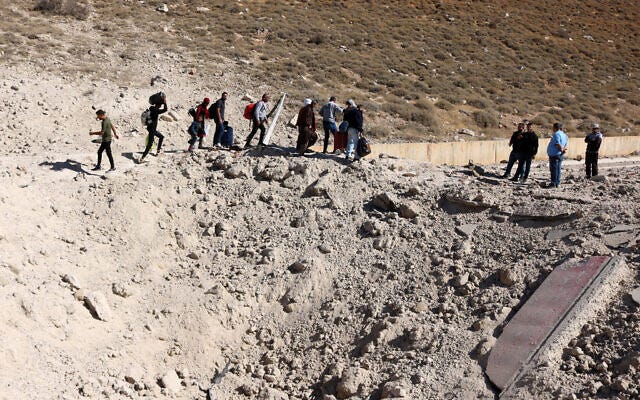
IDF Details Yearslong Efforts Against Hezbollah Arms Smuggling Outfit in Syria—Written by Emanuel Fabian for The Times of Israel—November 26, 2024
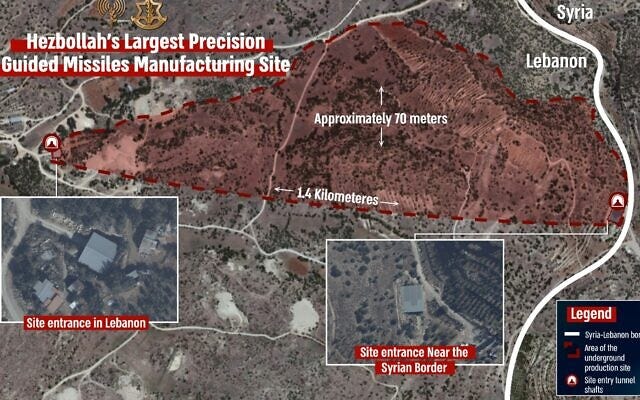
IDF Says it Hit Hezbollah’s Largest Precision Missile Production Site Hours Before Truce—Written by Emanuel Fabian for the Times of Israel—November 27, 2024
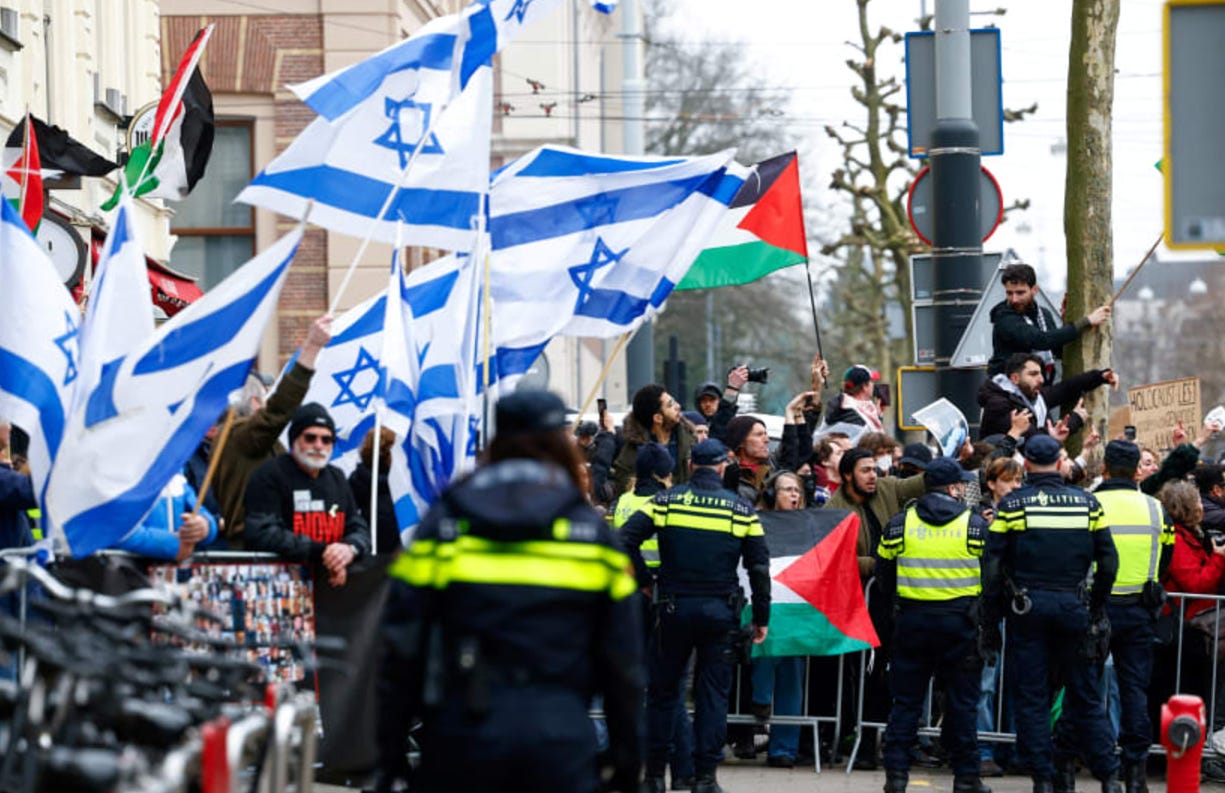
Dutch Government Creates New National Strategy for Combatting Antisemitism—Written by Mathilda Heller for the Jerusalem Post—November 25, 2024

Israel Says it Nabbed Large Trove of Iranian Arms Destined for West Bank Attack—Written by Emanuel Fabian for Times of Israel—November 27, 2024
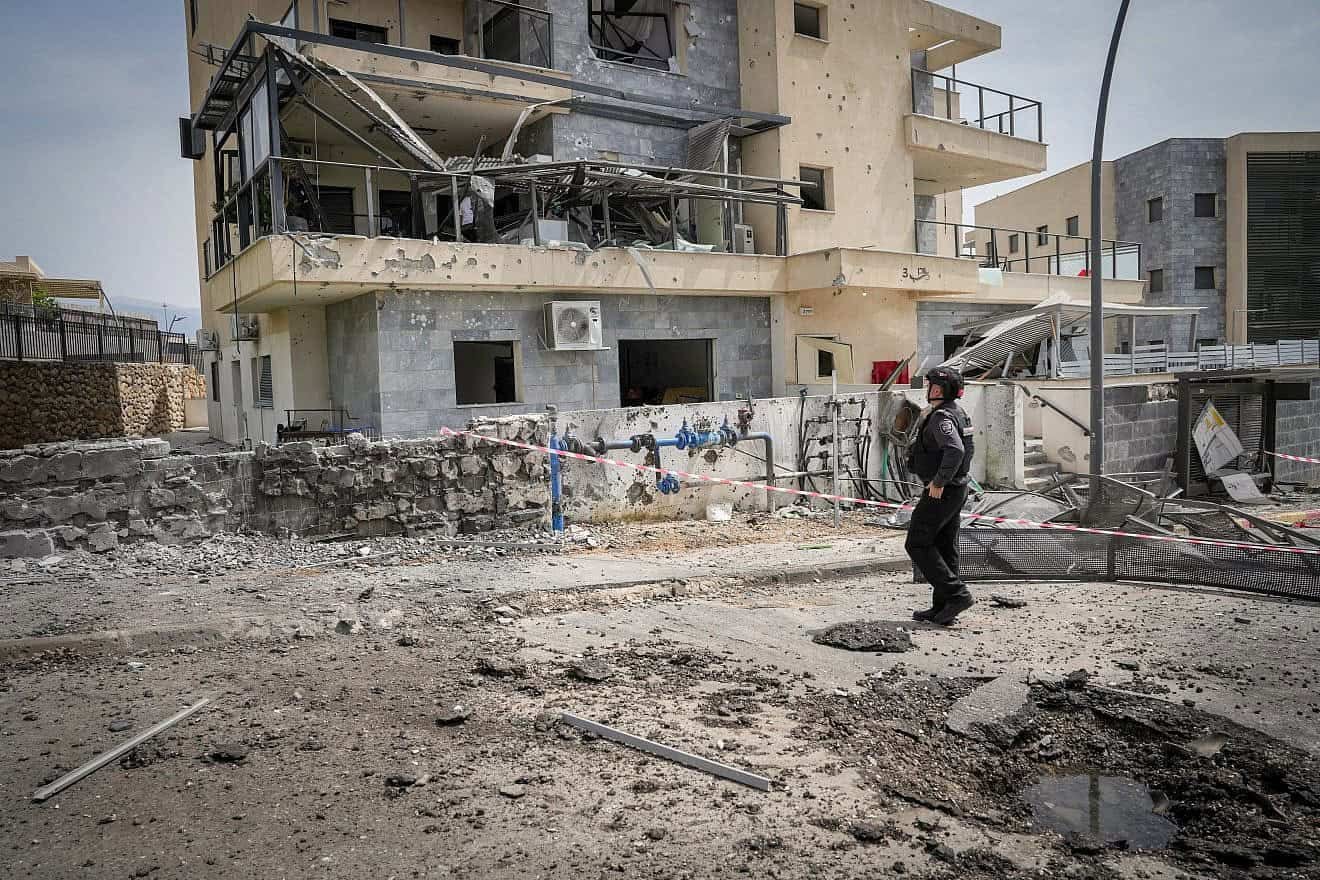
Northern Israel’s War Toll: 5b Shekels in Damage and Counting—Written by the Update Desk from Jewish News Syndicate—November 22, 2024
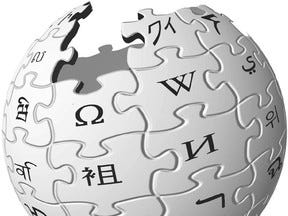
Opinion: Wikipedia Has it Out for Israel, and We’ve Got the Data to Prove It—Written by Neil Seeman and Jeff Ballabon for the National Post—November 18, 2024
IDF Forces Reach Litani River as Cabinet Set to Vote on Ceasefire—Written by Joshua Marks for the Jewish News Syndicate—November 26, 2024
Israel’s Struggle with Hezbollah—A War Without End is now available in eBook and hardback format on Amazon and IngramSpark. This compelling narrative explores Hezbollah’s origins and cancerous growth, traces Israel’s response, and reveals Israel’s present readiness to meet Hezbollah’s challenge.
Cliff Sobin
Important Link—Alma Research and Education Center: Understanding the Security Challenges on Israel’s Northern Border

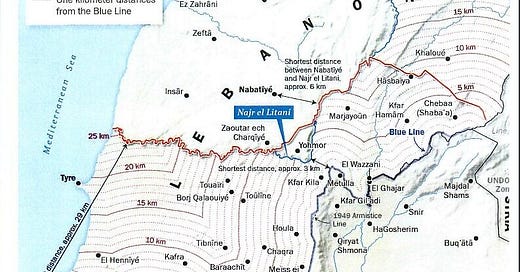



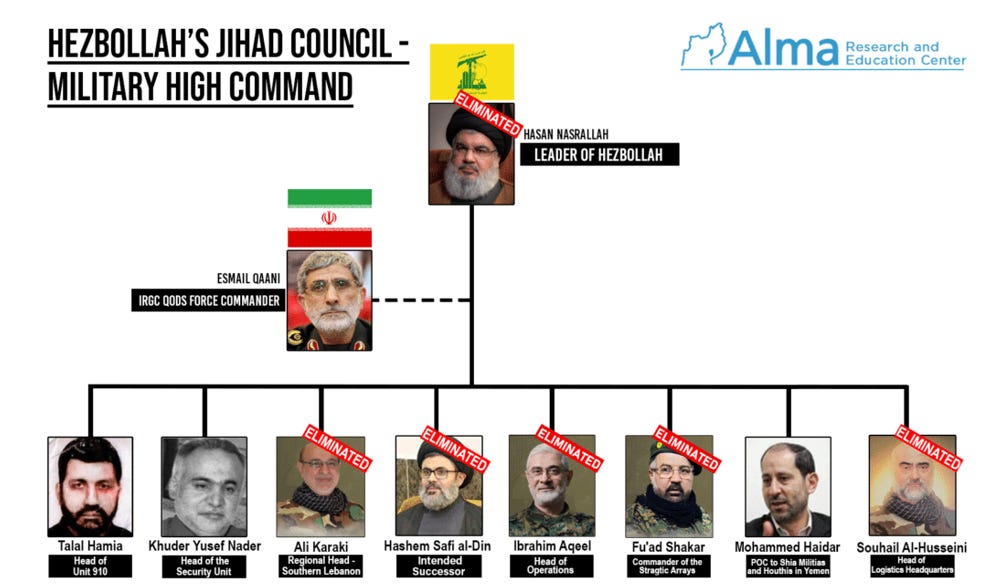
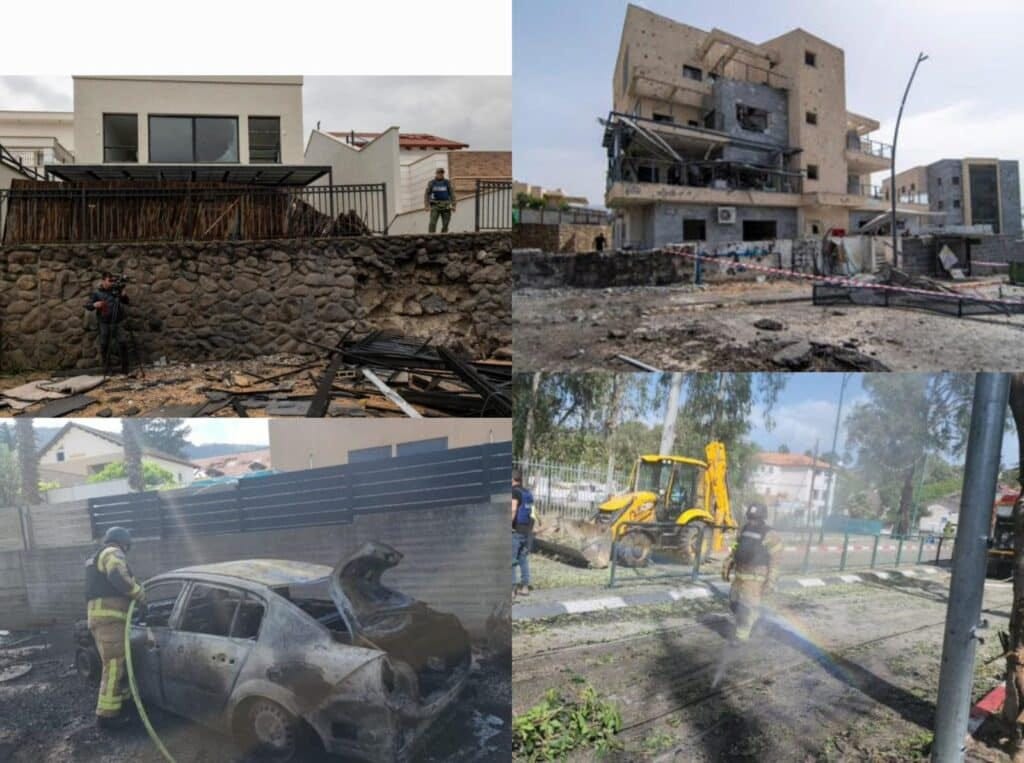
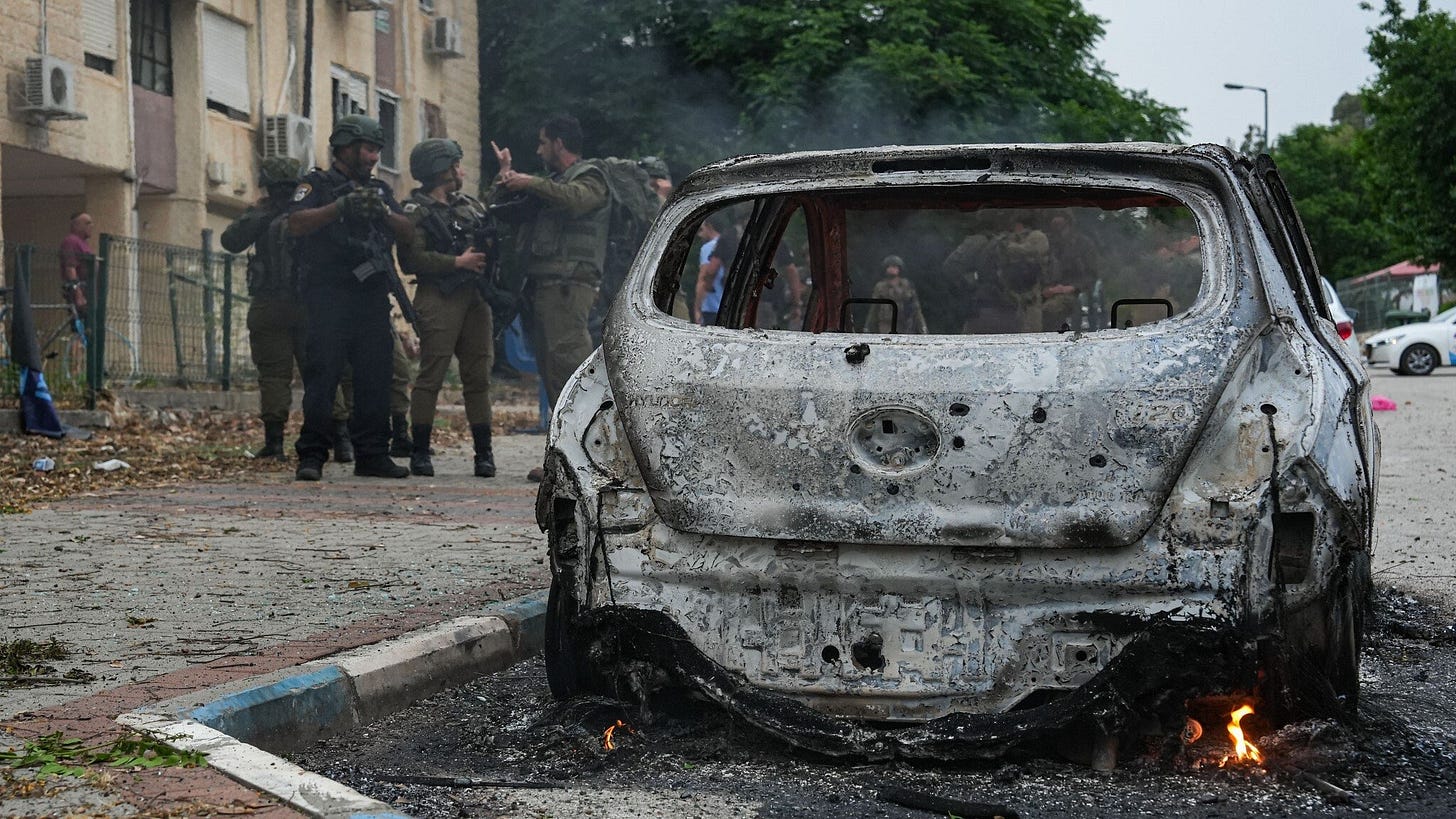
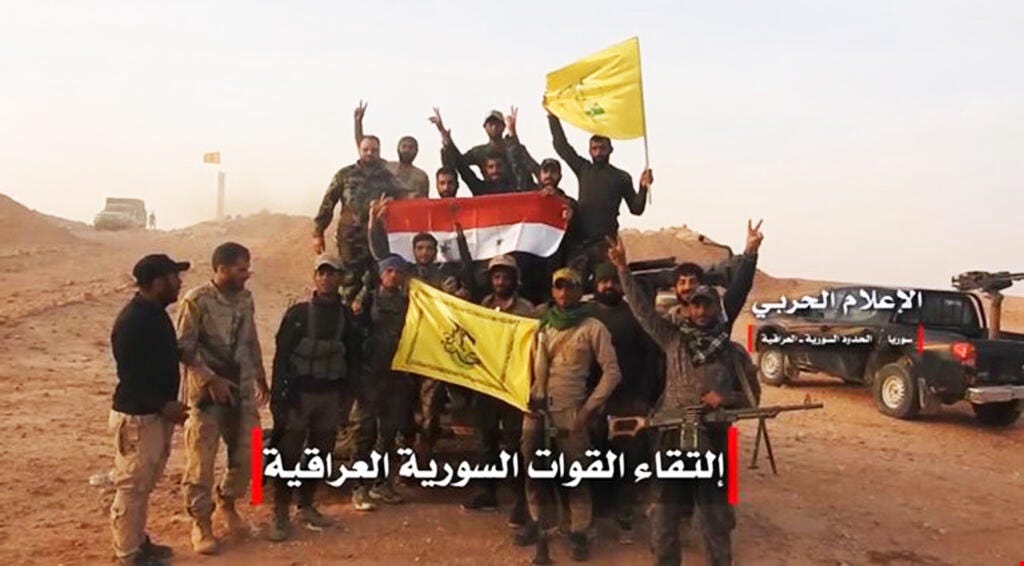
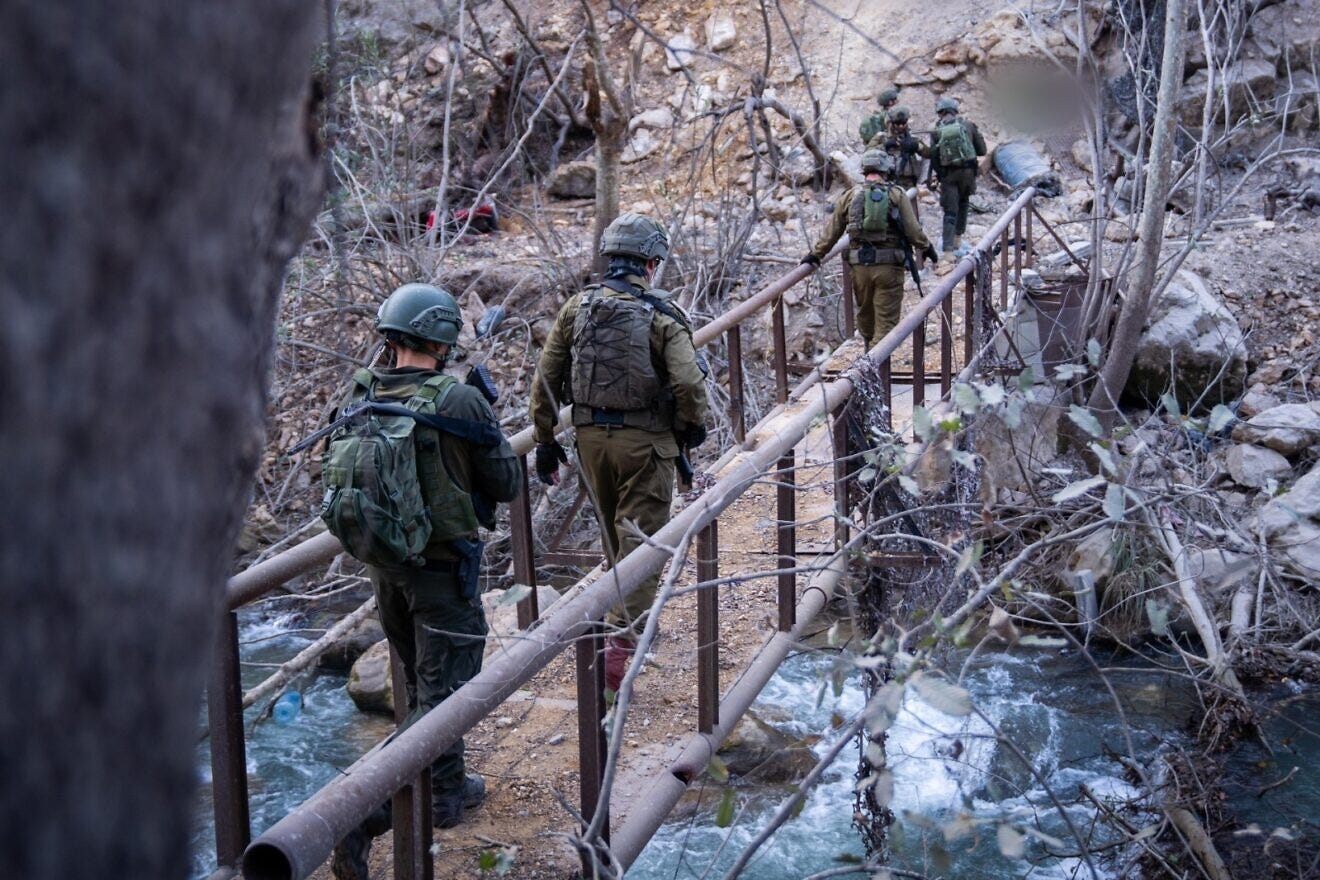


As usual from this author - the best researched and most insightful commentary on the evolving crisis on Israel's northern border.